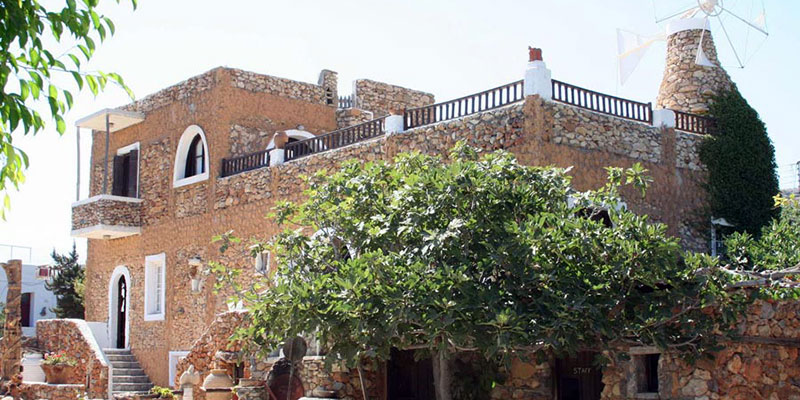Explore Crete
Minoan Palace of Knossos
Knossos is the largest Bronze Age archaeological site on Crete and is considered Europe's oldest city. The palace of Knossos was undoubtedly the ceremonial and political centre of the Minoan civilization and culture. It appears as a maze of workrooms, living spaces, and storerooms close to a central square. An approximate graphic view of some aspects of Cretan life in the Bronze Age is provided by restorations of the palace's indoor and outdoor murals, as it is also by the decorative motifs of the pottery and the insignia on the seals and sealings.
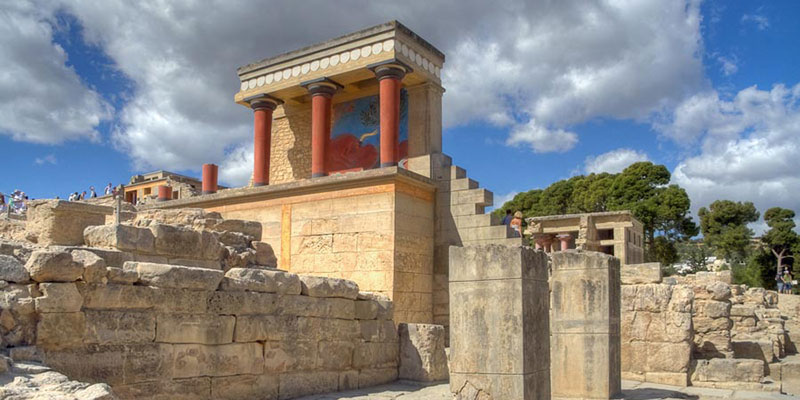
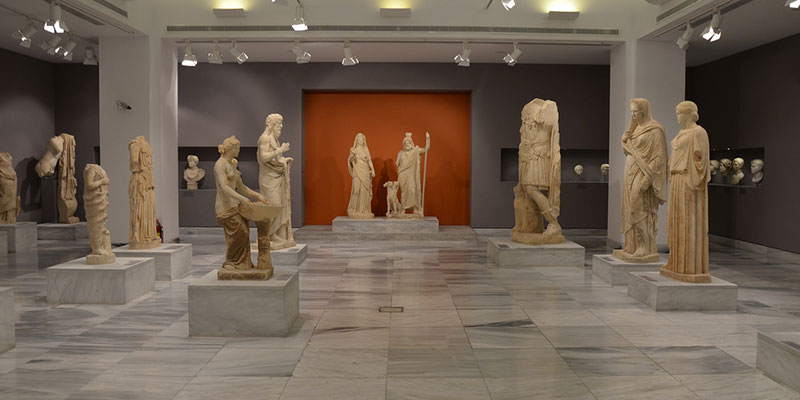
Heraklion Archaeological Museum
The Heraklion Archaeological Museum is one of the largest and most important museums in Greece, and among the most important museums in Europe. It houses representative artefacts from all the periods of Cretan prehistory and history, covering a chronological span of over 5,500 years from the Neolithic period to Roman times. The singularly important Minoan collection contains unique examples of Minoan art, many of them true masterpieces.
Koules Fortress
The "Castello a Mare" is a fortress located at the entrance of the old port of Heraklion, Crete, Greece. It was built by the Republic of Venice in the early 16th century. The fortress was completed in 1540. In 1630, the fort was armed with 18 cannons on the ground floor, and 25 cannons on the pathway leading to the roof. During the 21-year long Siege of Candia (Heraklion), Ottoman batteries easily neutralized the fort's firepower. The Ottomans eventually took the fort in 1669, after the Venetians surrendered the entire city. The fortress has been restored, and it is now open to the public. Art exhibitions and cultural activities are occasionally held at the fort.
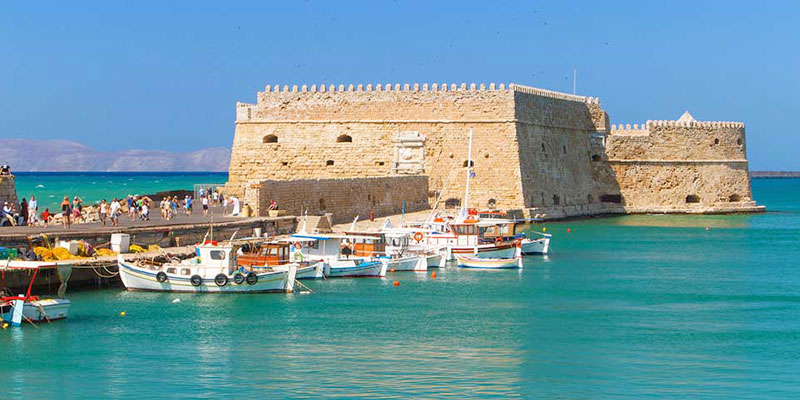
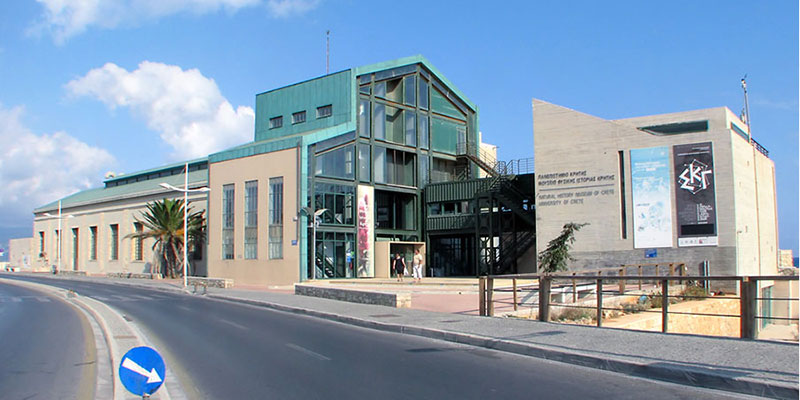
Natural History Museum of Crete
Natural History Museum of Crete has been functioning and operates under the framework of the University of Crete, covering all the activities of a comprehensive, modern museum. Maintains and develops collections, conduct research into the natural environment, contribute to teaching at all levels of education and shows the visitors the specificity of the Crete and Mediterranean.
Nikos Kazantzakis Museum
The Nikos Kazantzakis Museum pays tribute to the important intellectual, author, thinker, philosopher, politician and traveller Nikos Kazantzakis. The Museum is made up of a cluster of buildings in the central square of the historical village of Varvari, now known as Myrtia. The Museum holds manuscripts and notes by the author; samples of his correspondence with major thinkers, politicians and authors of his time; first editions of his works in Greek and other languages; rare photographic material etc.
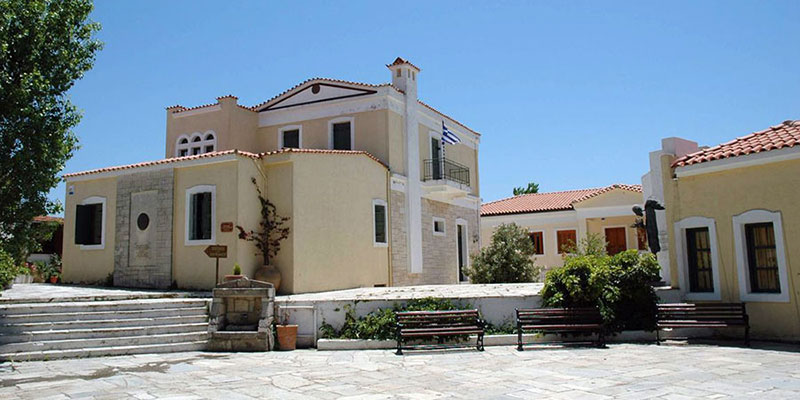
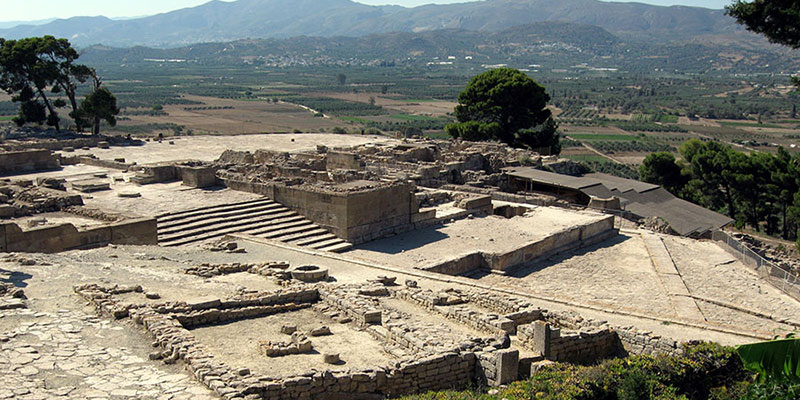
Minoan Palace of Festos
62 km south of Heraklion. The second largest city of Minoan Crete is built on a hill 100 m above sea level, in the fertile valley of Messara. Since 1900, continuous archaeological excavations from the Italian Archaeological School, have brought to light the magnificent Minoan Palace with its royal courts, great staircases, theatre, storerooms and the famous Phaistos disk.
Venetian Walls & Nikos Kazantzakis Tomb
Venetian fortification is still standing today, embracing the old town was designed in line with the rules of the new defensive system with bastions. The outside perimeter was surrounded by a deep ditch. Construction was completed in the early 17th century. Thanks to its new walls, Candia was able to resist the siege by the Ottoman army for over 20 years (1648 -1669).
Nikos Kazantzakis tomb, the famous Greek writer tomb, is situated on the highest point of the Venetian fortification, at the Martinengo Cavalier.
Nikos Kazantzakis tomb, the famous Greek writer tomb, is situated on the highest point of the Venetian fortification, at the Martinengo Cavalier.
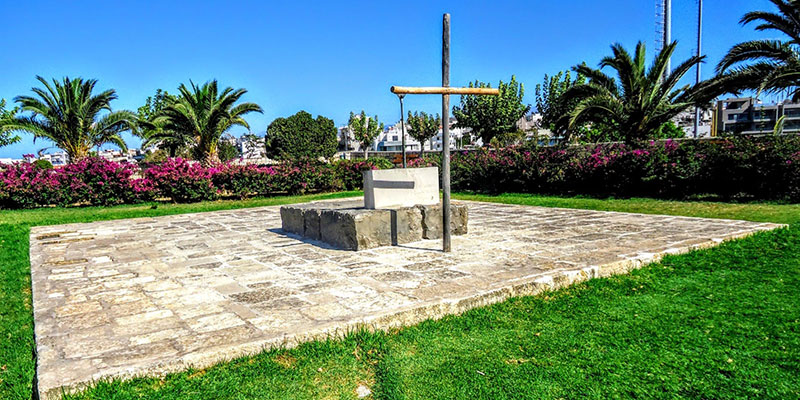
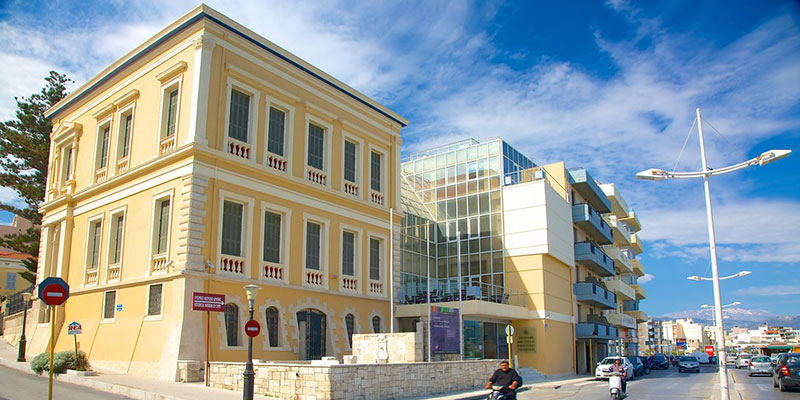
Historical Museum of Crete
The Museum was founded and is run by the Society of Cretan Historical Studies, with the aim of preserving and showcasing the cultural heritage of Crete from early Byzantine times to the modern era. Successive extensions to the museum and recent re-displays, using contemporary perceptions in museology and new media applications, have contributed to creating a lively, up-to-date, visitor-friendly museum. The HMC now offers a composite view of Cretan history and art from the early Christian centuries to the 20th century. Temporary exhibitions cover a wide span, ranging from Byzantine to modern art, showcasing key literary figures in Greece (Elytis, Kazantzakis), and presenting major historical events from the late 19th century to the Second World War.
Minoan Palace of Malia
Malia Crete is one of the ancient Minoan palaces which testify to the magnificent civilization which grew up on the island. The site is situated about two miles (3 km) to the east of the modern resort of Malia. It has been excavated mainly by the French School of Archaeology since the early 1920's. Because the site was abandoned at the end of the 2nd millennium BC and no one else every used it, there are no other building or other remains to cause confusion.
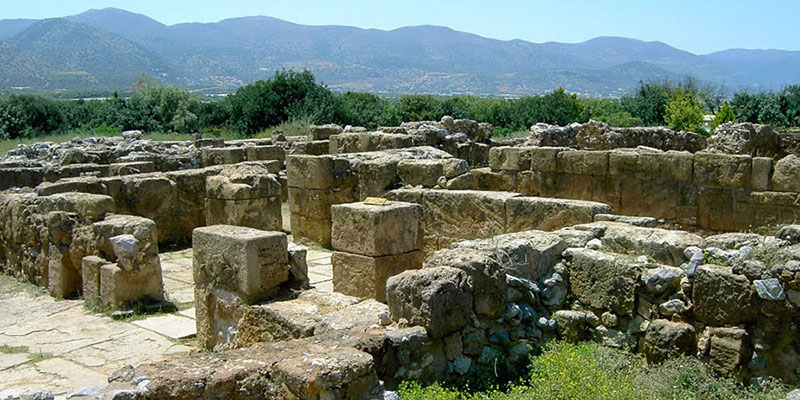
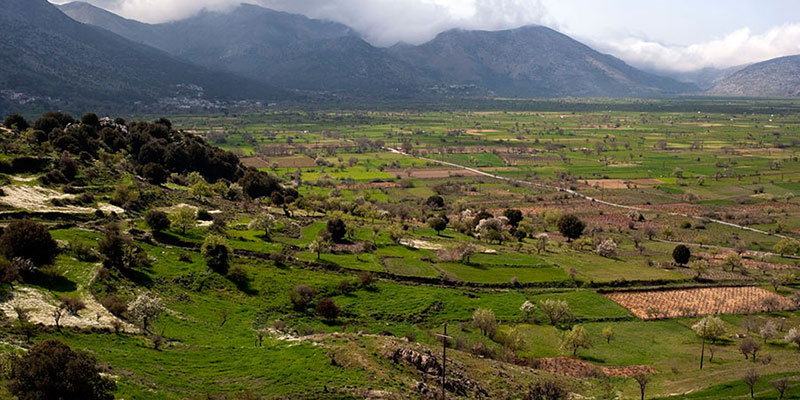
Lassithi Plateau
Lassithi Plateau is a beautiful valley surrounded by mountains and is known for its picturesque windmills. During 50s and 60s the plateau was one of the first wind farms in Europe. There were thousands of windmills that pumped groundwater, to which irrigated their crops by inhabitants. The 18 villages of the plateau is built at the foot of the surrounding mountains, leaving the plain free for cultivation, and connected by a circular road of length 23km.
Spinalonga
Spinalonga is an arid and barren rocky islet with an area of 8.5 hectares lying at the mouth of the natural port of Elounda in the Lasithi prefecture of Crete. Due to its strategic location, it was fortified and served a variety of roles and purposes over the centuries. Here, on an island where lepers from Crete and the rest of Greece had been kept in isolation until 1957, a story about love and pain, separation and fear was born.
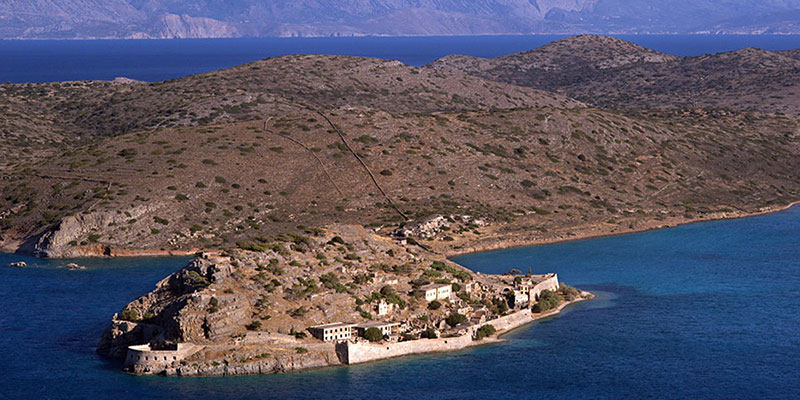
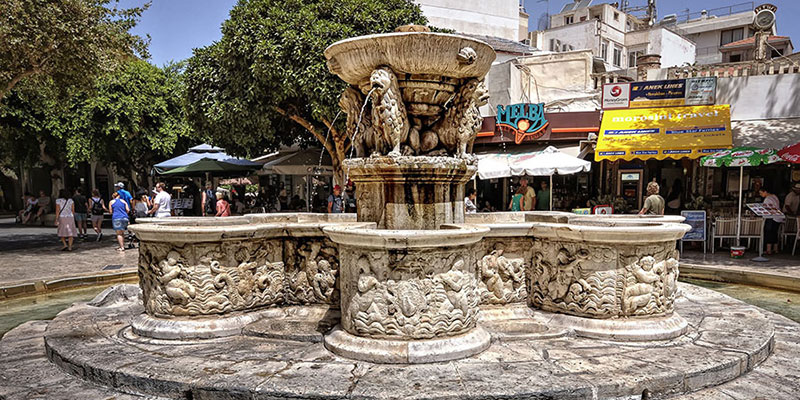
Morosini Fountain
Situated by 25th of August Street just across the Basilica of St. Marco, the imposing fountain of Morosini (popularly known as the “Lions”) is the ‘belly-button’ of the city and common meeting place for locals and visitors. The fountain was commissioned in 1628 by Francesco Morosini, the Venetian Governor of Crete, to deal with the water shortage of the city. Through a complex network of pipes, the mouths of the four lions gushed water transferred from the mountain of Yuchtas. Apart from the lions (symbol of Venice) the fountain is adorned by mythological representations and sea creatures (such as dolphins). Initially there was a statue of god Poseidon in the center of the fountain which is now missing. The most dominant theory says it was probably destroyed by an earthquake.
Dia Island
Dia island is 6 miles northeast of the city of Heraklion. It is a virgin island that hosts seabirds and various species associated with its seafront slopes. It is one of NATURA protected areas because of its particular habitat and its endemic plants. According to myth, Dia was a colossal marine creature that approached Crete and at the last moment Zeus turned it into stone with a strong lightning, creating the island.

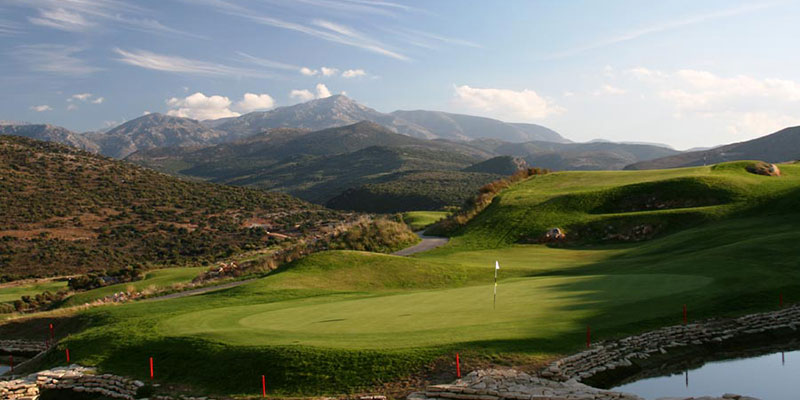
Crete Golf Club
The Crete Golf Club is a championship golf course - the only 18-hole golf course on the island of Crete and one of the most impressive golf courses of the Mediterranean, which holds a unique challenge and a pleasant experience for both golf players and visitors all year round. The golf course has been built to international PGA standards by architect Bob Hunt, a member of the English PGA. Each hole has been constructed separately and in harmony with the surrounding landscape, providing panoramic views of both the mountains of Crete and the Aegean Sea.
Cretan Open-air Museum (LYCHNOSTATIS)
The Cretan Open-air Museum "LYCHNOSTATIS" aims to promote the understanding and awareness of the Cretan folk cultural heritage. Its collections relate to the following themes: Cretan Folk Tradition and Ethnology, Cretan Nature and Environment, Cretan Folk Culture. Located in one of the principal tourist areas in Crete, the museum is, apart from a valuable tourist asset, an exemplary self - motivated conduct on tradition, culture and environment of the island.
